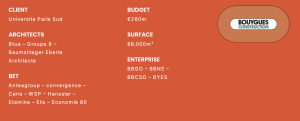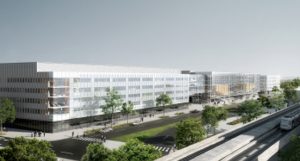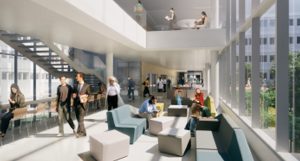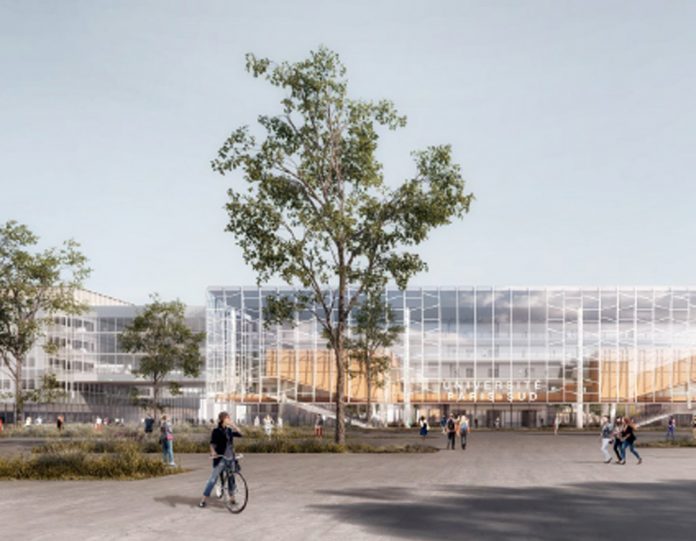The Université Paris-Sud signed a public-private partnership (PPP) contract with the project group Platon Saclay for the concept, realisation and operation of a future scientific centre of excellence for biology, pharmacy and chemistry

This complex of approximately 88,000 square metres, situated on the Saclay Plateau, one of the most important building sites in France, is a major scientific project for the university and for the future Université de Paris-Saclay. For a design-build amount of €260m, delivery was expected in April 2022, after 12 months of preparation and 36 months of work.
A collaborative database was needed
The first problems regarding the processing of room data sheets for the project quickly became apparent. These would have to be treated room by room in the model, which would take months of work. Since the number of people involved and volume of data was quickly growing, it became obvious that we needed to set up a collaborative database to bring together all the project information.
“The choice to use dRofus’ platform was made in the middle of the architectural planning phase and involved a late adaptation of work processes to allow us to make more rigorous modifications. We have to anticipate and integrate solutions in a project as much as possible, and as quickly as possible, but it’s never too late! It’s worth the cost of doing it… even when it’s late!” explains Romain Caron, BIM manager of Bouygues Construction.
“Once the program was integrated into the platform and linked to Revit, whatever information the team wanted to extract was immediately available. Even though the rooms had specific screening needs, the team could use the information to accomplish design data and drawings, accounting for biosafety environments and so on, to improve everyone’s understanding and analysis.”
He added: “The dRofus-Revit link also allowed us to produce a large number of views and location drawings of rooms with diverse needs via the digital model. These included natural lighting, management of different risks, the need for gas or fluids specific to the rooms and optimisation of networks. It also allowed designers to position the equipment needed in a targeted room.
“In the beginning, the biggest concern was on how to structure the data to export customer files but as we used the software, we gradually discovered how to adapt its functionalities to the needs of the construction site.
“The team used items, then documents and reports. After that, sub-items. For example, when lighting was to be added, the electrician would list hardware in sub-items: mounting plate, tubes, neon lights, cable and so on – all done by level or by building. Using dRofus Web, we could use a tablet to verify deliveries to each room and the dRofus API provided a direct connection to the PowerBI data visualisation software. This allowed us to monitor the client’s validation of the progress of the six-sided views of each building.”
Achieving centralised data with the dRofus web platform
The dRofus web platform made managing planning on the building site much easier, particularly with regard to accessing and storing data directly. Having centralised data across all trades was a major benefit on this project.
“I used to think that dRofus was reserved solely for architectural purposes but the BET trades are really getting interested and can see the benefits!” adds Romain Caron.
“dRofus provides great reliability in the data to be used on a construction site. There is a real added value when you can optimise a project without having to expend a lot of effort as you do with Revit. Simple tasks can save hours or days of work. The return on investment is real!”
Badstugata 2, 0183 Oslo, Norway
+33 769438592
*Please note: this is a commercial profile














